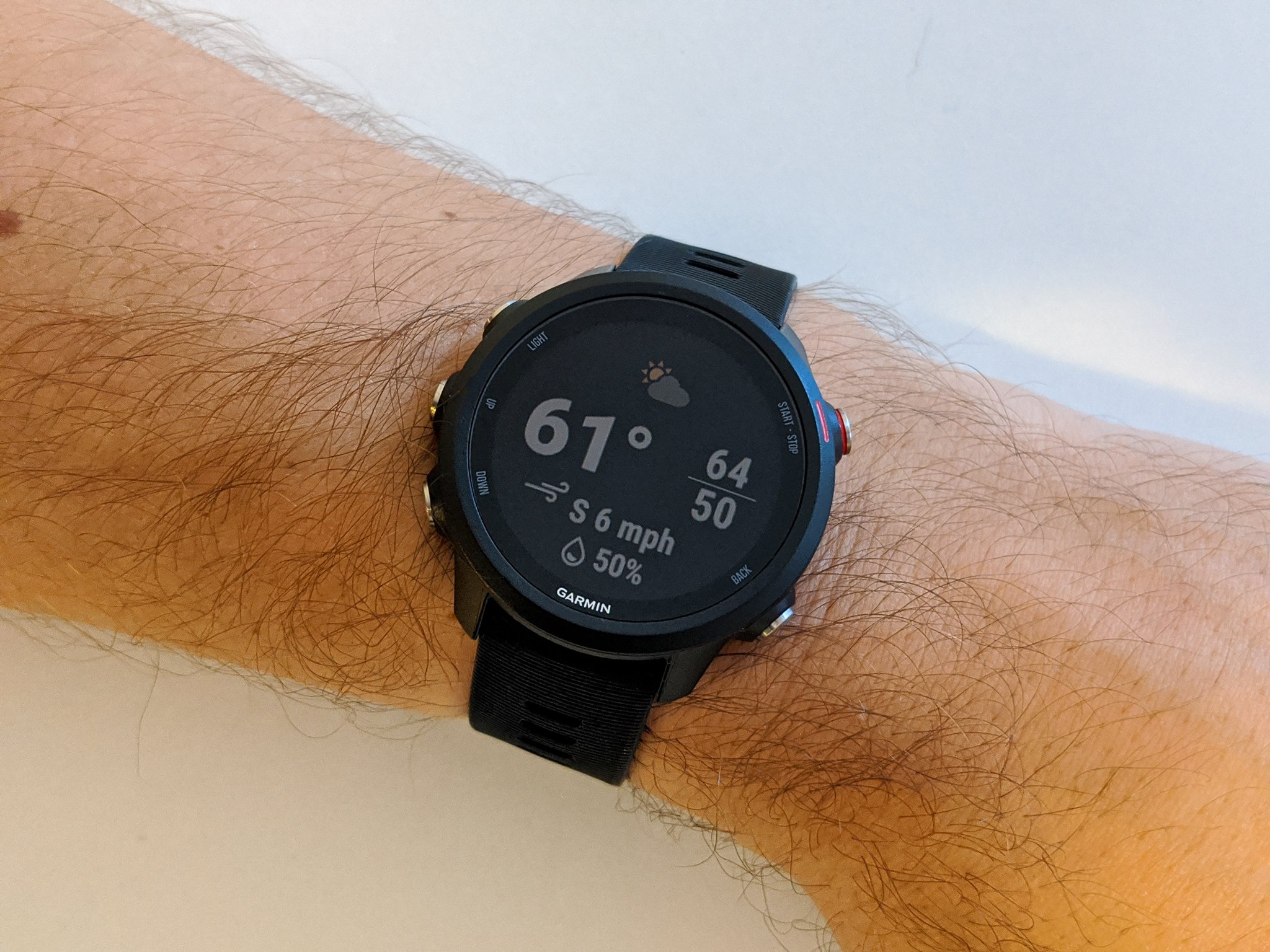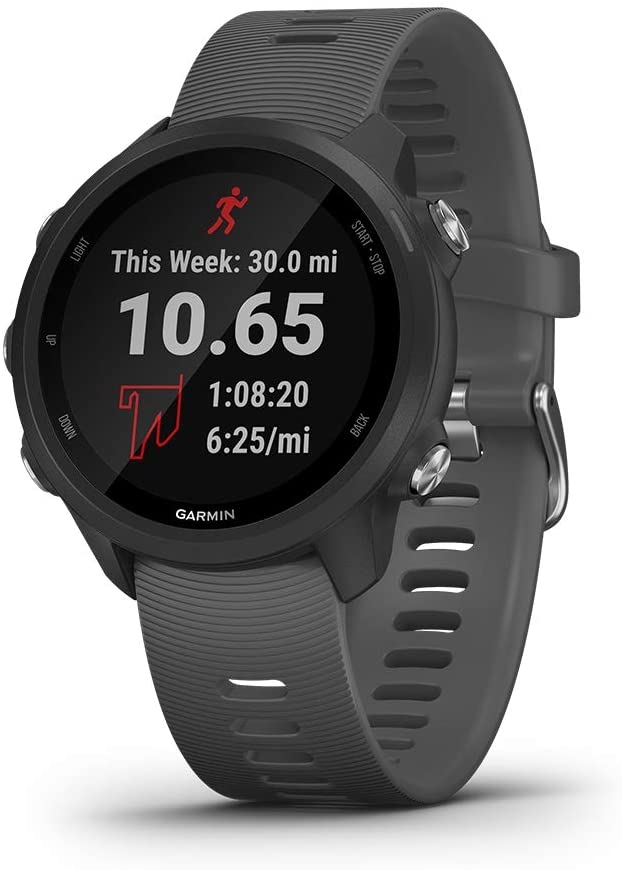Why I gave up on general-purpose smartwatches and got a Garmin for running
When your watch is capable of so much, it's unlikely to master any one task.
After spending years using general-purpose smartwatches, primarily from Samsung or the myriad of options with Wear OS, it's clear that none of them is up to the task of being a capable running companion. If you care about fitness, you need a fitness-focused smartwatch, in my case a Garmin for running, in order to get the best experience for your core use.
These smartwatches are capable of doing so much that they end up being a master of nothing — and while I appreciate their capabilities overall, my primary focus right now is running, and for that task, there's nothing better than a Garmin. I've been using a Forerunner 245 Music, and I'm not going back.
Consistent GPS accuracy is the most important feature
Of all the features you look for in a fitness-focused smartwatch, GPS consistency is the most important when you're running (or walking, biking, hiking). After months using the Galaxy Watch Active, then Active 2, I just got tired of being frustrated by its inconsistent GPS.
If your GPS isn't accurate and consistent, nothing else matters.
It's not that GPS on the Watch Active 2 is particularly bad in most cases. In a wide-open field or walking path, or running along suburban streets, things were well within a normal margin of error for a wrist-worn GPS tracker. The issues come with how it handles edge cases. Running in a city with tall buildings and tree-lined streets, moving around cars and construction areas, pausing and resuming at various points all introduce problems. The watch's GPS (and software) just can't handle and correct for these grey areas, and the accuracy really starts to drift.
I started to notice it when running the same routes over and over again, getting notably different distance- and pace numbers. I confirmed it when I started running the same route with multiple watches. In one test with my Garmin, Watch Active 2 and Puma Smartwatch, the Garmin was less than 1% off of my pre-mapped distance, while the Active 2 was 6.4% off and the Puma was an absurd 13.5% off — that's unacceptable. On some long runs with friends, my Watch Active 2 has been off as much as 1 mile every 10. That's a lot, and I quickly lost confidence that the numbers I was being shown on my wrist during a run, and eventually at the end, were accurate. That makes comparing run-to-run performance, and training for specific goals, really difficult.
My Garmin is just accurate. Every time. No matter how I run, where I go, how often I pause and resume, or anything else. Side-by-side with a friend wearing a Garmin we're typically accurate to one another in the hundredths of a mile. At worst we've been separated by 0.15 mile (about 800 feet) over a 10-mile run — I can live with that.
Physical buttons really do beat touch screens
I always understood the utility of having physical buttons available on a smartwatch to augment the touch screen experience when needed. And I'm a huge fan of both the rotating side button on Wear OS watches and the physical rotating dial on some of Samsung's watches. But I never understood the value of having only hardware buttons, and no touch screen at all, on a smartwatch until I started running.
Touch screens end up being a burden for exercise.
When I'm running in the cold, the touch screen barely works with a thin pair of gloves — and doesn't work at all with most pairs. When I run in the rain, I've regularly had the water create accidental touches on the screen and pause or even cancel my runs. I've been sweating profusely in a spin class (as you do) and had the same thing happen — so often that I had to start using "swimming" mode.
There's no way to accidentally press the buttons on my Garmin. No way to pause a run, toggle a screen or change a setting unless I explicitly do so. And at the same time, that physical start/stop button makes pausing runs when I want to — like every time I wait for a street light or stop for a drink of water — incredibly easy. I can pause and resume without looking at my wrist, and control every function in any environmental situation.
A monochrome always-on display is great
I need to be able to glance and get important information on the move in any condition.
The other advantage Garmin gains from not having a traditional touch screen is that the panel is always-on and always visible in harsh lighting conditions. Yes, it's lower resolution, and the colors aren't nearly as appealing at a glance. But you know what's great about it? I can see it, in any weather, with no reflection or glare. With every other smartwatch I'm constantly shading my watch with my hand to see what's on the screen, and that just isn't doable when I'm just trying to get a glance at my pace and distance as I run.
The Forerunner 245's screen is perfectly visible in most situations even without the backlight turned on, but you always get the extra illumination anytime you press a button. For this type of watch and what it's used for, this is the exact kind of screen I want.
Battery life matters
If your battery life is only good for 1-2 days to begin with, a long run can cut into it massively.
One thing I never really considered when I first started taking my running more seriously was my smartwatch's battery life. But it makes sense: leaving your screen, GPS and heart rate sensor running constantly for 1-2 hours straight can really take a toll on your battery. And if you have a watch like the Galaxy Watch Active 2, which is giving you two days of battery life, you can cut into that substantially by running one of those two days. To say nothing of Wear OS watches that need a charge every night; taking a long run in the morning could mean you don't make it to the end of the day.
On the other hand, my Forerunner 245 gets about a week of battery life, even with multiple hours of run tracking. I've never had to think about charging my Garmin before a run, but I checked my Watch Active 2 every time and often tossed it on the charger for a bit to reassure myself it'd be good to go. This is really just a convenience factor; if I want to have this watch on me for running and daily wear as a smartwatch, I don't want the activities I track to cut into battery life so much that I'm constantly worried about the battery life when I'm not tracking.
Apps and integrations can be frustrating
I think the biggest frustration I've had with trying to track runs on other smartwatches has been the lackluster third-party app support. I prefer to use Strava as an aggregator of all of my activities, letting me pull in data from multiple sources and platforms so I'm not locked into something like Samsung Health or Google Fit.
I don't want to mess around with third-party apps and APIs, it needs to just work.
Annoyingly, the built-in workout trackers on Samsung and Wear OS watches don't export complete data to Strava. Worse yet, the Strava app is really bad on Samsung's wearables ... and it isn't much better on Wear OS. On Samsung, the app regularly crashes or stops tracking randomly. On both platforms, you're limited in your options for the types of activities you can track, what stats you can view during and afterward, and they don't integrate with either watch's hardware buttons. It feels like you're on a phone using a web app when you really want a native app experience.
This wouldn't be that big of a deal if there were good integrations between the platforms ... but there aren't. After months using a Samsung smartwatch, I could never get the integration to stay connected, making me regularly re-authenticate after I noticed data wasn't sending to Strava. Google Fit is better with data synchronization, I'll give it that, but Fit itself is a rather barebones platform focused on daily activity rather than workouts and training. Garmin's fitness platform is incredibly well-featured, with detailed data analysis and training assistance, and it always syncs to Strava.
The Garmin handles the smartwatch basics, too
Garmin's watches are clearly focused on being a fitness tracker first and foremost — but that doesn't mean they eschew smartwatch features altogether. My Forerunner may not have as good-looking of a screen or the fluid animations of the competition, but it gets the basics done. I have notifications, several customizable widgets, weather, calendar, and a robust ecosystem of watch faces both pre-loaded and available for download. You don't have to give up all of the smartwatch features you're used to — just a lot of the "extras."
By being fantastic at fitness tracking, you give up extras, features and flair.
And as my friend MrMobile has spoken about with his Garmin watches, using only the physical pushers and no touch screen doesn't really hinder its performance as a "regular" smartwatch either. You get used to it, and after a little while you'll be able to quickly scroll through the interface and get to everything you need by subconsciously remembering the combinations of clicks necessary. It's just a different way to interact — one that's a bit slower and less intuitive, but functional nonetheless.
In the same way that general-purpose smartwatches often fail in specific areas by trying to be good at everything, the Garmin platform can be mediocre in most areas because it's so great at fitness and health tracking. That's simply the trade-off you have to make.
Running companion
Garmin Forerunner 245
A better choice for running than any general-purpose smartwatch.
When fitness is your top priority, get a smartwatch made for the task. The Forerunner 245 has excellent tracking accuracy, focused software, hardware buttons and a screen visible in all conditions.
Upgrade pick
Garmin Forerunner 945
When you take things really seriously.
The 945 brings you most of the same base features as other Garmins, but adds more options including altitude for various sports, and triathlon-level tracking.
from Android Central - Android Forums, News, Reviews, Help and Android Wallpapers https://ift.tt/3e9gIZ3
via IFTTT









Aucun commentaire: